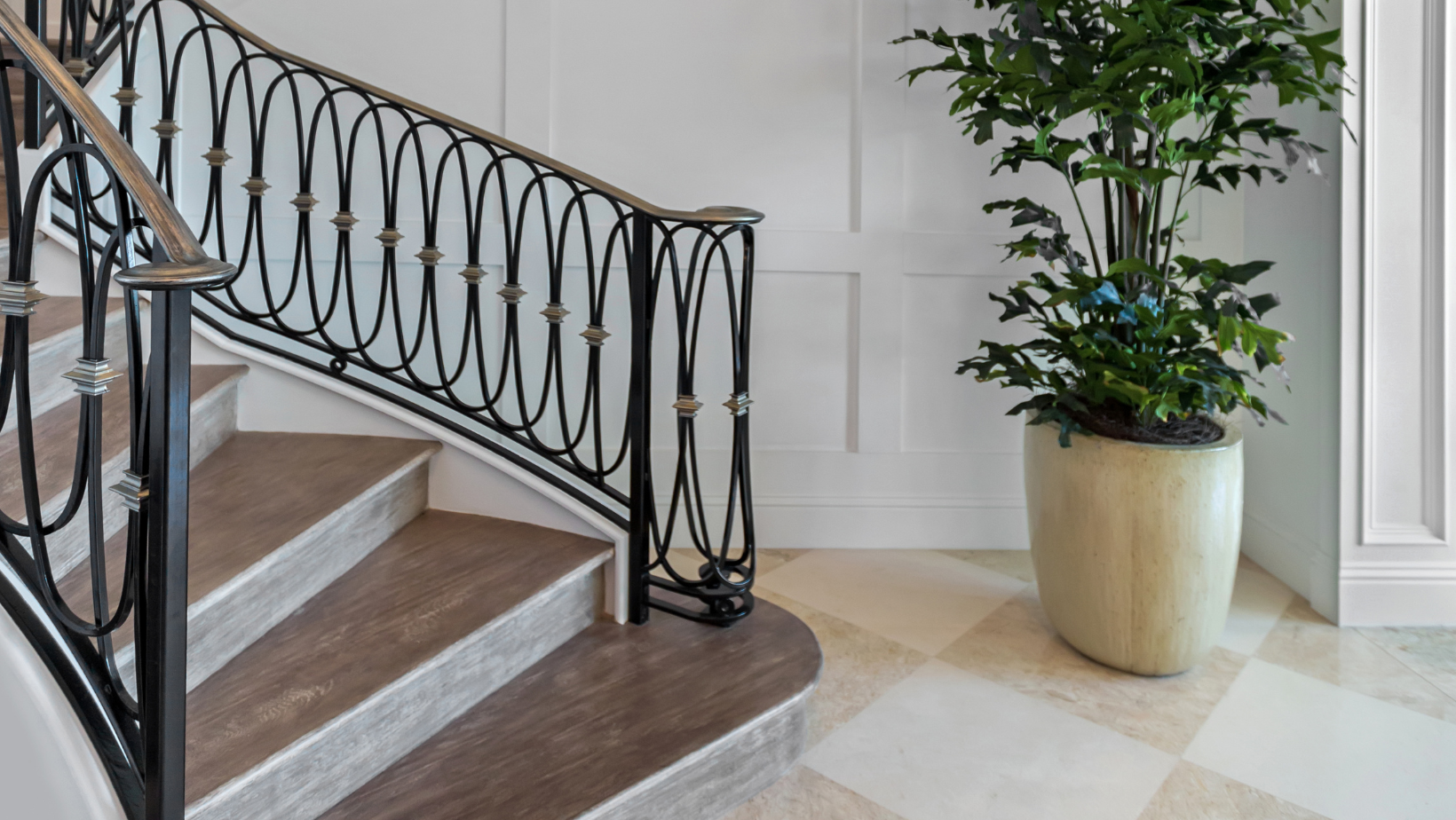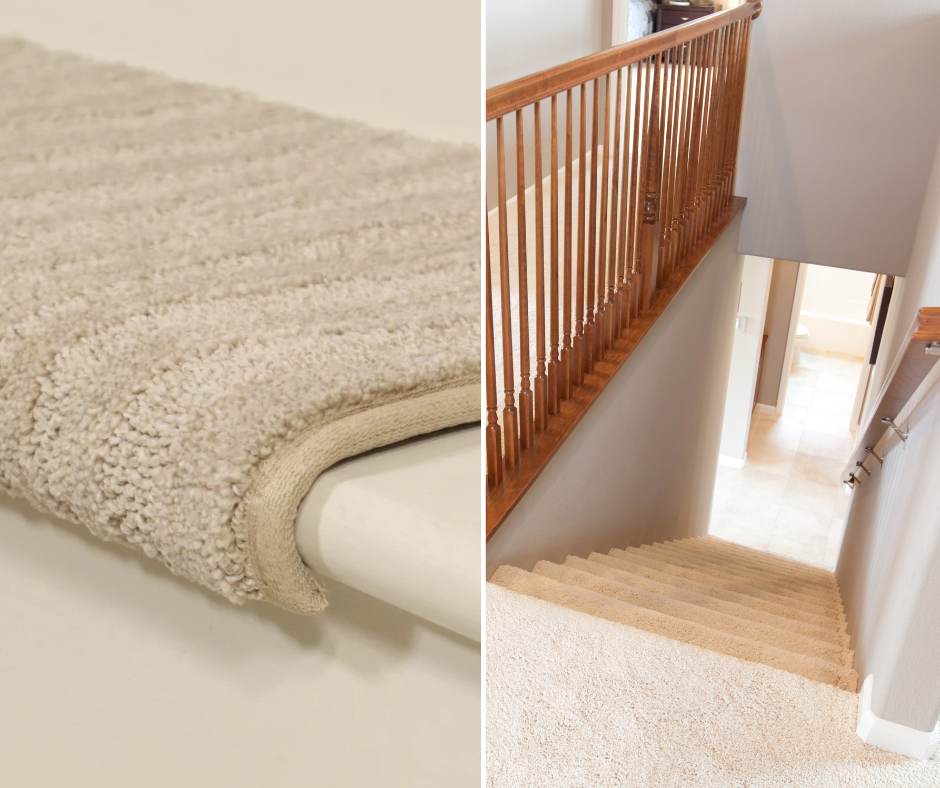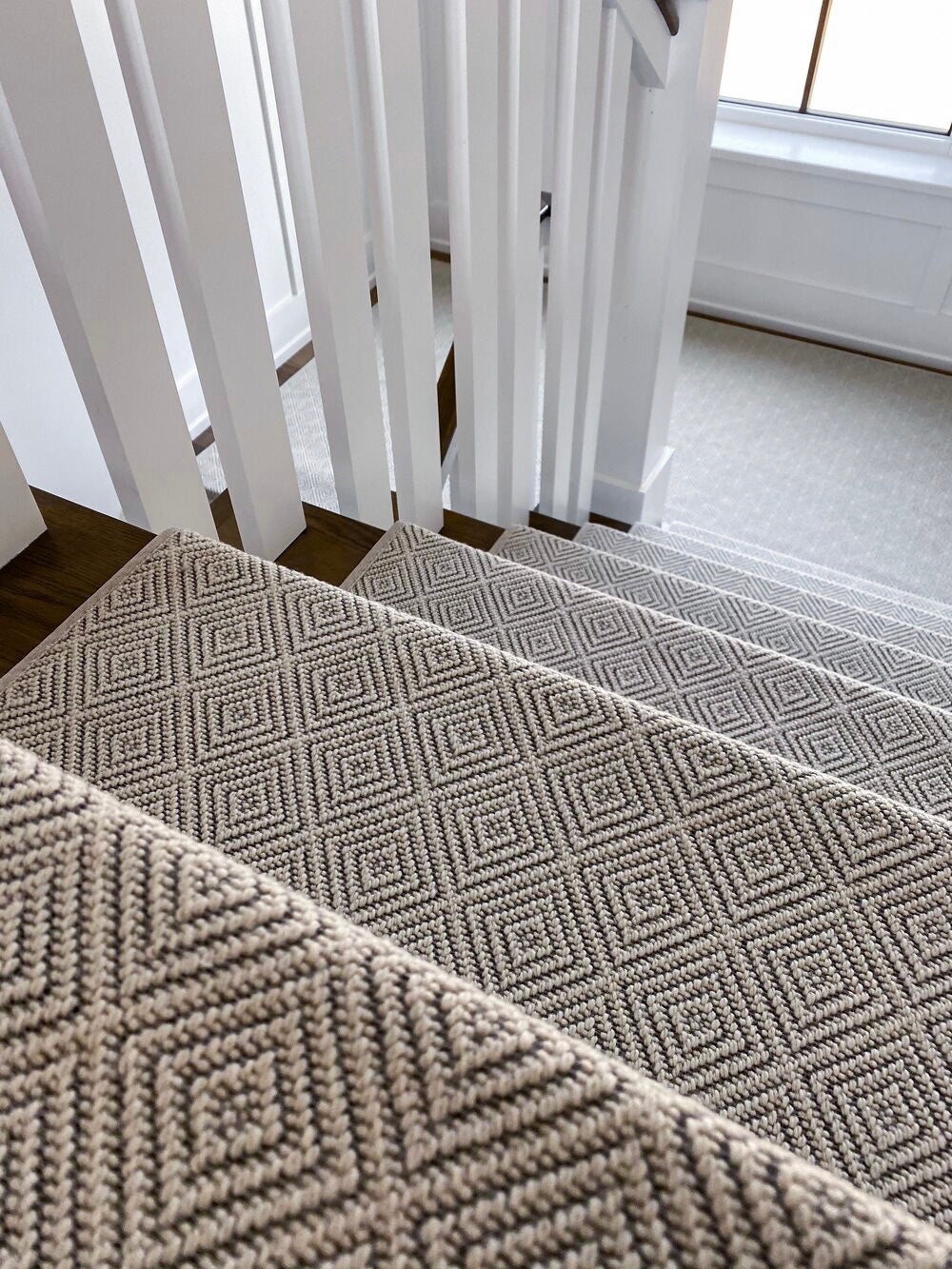Stair treads dimensions determine the width and depth of each step, ensuring a safe and comfortable staircase.
The typical stair dimensions for residential stairs include a minimum tread depth of 10 inches and a stair width between 36 to 42 inches.
Proper measurements are essential for securely fitting carpet stair treads to enhance both safety and style.
Accurate stair tread dimensions prevent tripping hazards and ensure a seamless installation.
When measuring for carpet stair treads, adding about 2 inches to both width and depth allows for a snug fit.
This guide will help you measure correctly and choose the best stair treads for your home.
Why Stair Tread Dimensions Matter
Stair tread dimensions play a crucial role in stair safety, comfort, and overall design.
Properly measured treads:
-
Ensure safety by preventing tripping hazards.
-
Improve the look of your staircase with a professional, well-fitted appearance.
-
Provide comfort by ensuring a secure fit without movement.
-
Enhance durability since properly fitted treads last longer without excessive wear.
Understanding the correct measurements for your stair treads will help you find the best fit for your home, whether you're using standard sizes or need customized carpet stair treads.
Tools Needed for Measuring Stair Tread Dimensions
Before measuring your stairs for carpet stair treads, gather the necessary tools:
-
Tape measure – Essential for measuring width and depth accurately.
-
Pencil – Helps mark reference points on stairs if needed.
-
Paper – Useful for recording measurements.
-
Level – Ensures that stairs are even and not slanted, which can impact the fit of carpet stair treads.
By using these tools and following the correct measuring process, you can ensure a seamless fit for your stair treads.
How to Get Stair Tread Dimensions
Accurate stair tread dimensions depend on measuring both width and depth correctly. Follow these steps:
-
Measure the width – This is the horizontal measurement of the step. Measure from the left edge to the right edge at the widest point.
-
Measure the depth – Measure from the back of the step (where it meets the riser) to the very front edge.
-
Account for overhang – If your stairs have a nosing (overhanging edge), include that in the depth measurement.
-
Add 2 inches – To ensure a proper fit, add approximately 2 inches to both the width and depth measurements.
-
Record the measurements – Keep track of the dimensions for all steps, as some may vary slightly.
Having precise stair tread dimensions is particularly important when selecting carpet stair treads, as even minor variations can affect how securely they adhere to each step.
Standard and Typical Stair Dimensions
In most homes, staircases follow general sizing guidelines.
The typical stair dimensions for residential use include:
-
Tread depth: Minimum of 10 inches (excluding nosing).
-
Riser height: Maximum of 7 3/4 inches.
-
Staircase width: Typically between 36 to 42 inches.
These dimensions are designed to ensure comfort and stability when ascending or descending a staircase.
While standard sizing works for most homes, it's important to measure your specific stairs because variations may exist depending on architectural design.
How Stair Tread Dimensions Affect Stair Safety
The depth and width of each stair tread directly impact how comfortable and safe a staircase feels when used.
Narrow stair treads can lead to missteps, while treads that are too deep may feel awkward to navigate.
Ensuring your stair tread dimensions follow standard guidelines can prevent accidents and improve usability.
For homes with children, elderly individuals, or pets, installing carpet stair treads on properly measured stairs can add an extra layer of safety by reducing slip hazards.
Difference Between Stair Treads and Carpet Stair Treads
-
Stair Treads – These are the horizontal surfaces of each step, typically made of wood, stone, or other hard materials.
-
Carpet Stair Treads – These are individual carpet pieces designed to adhere to stair steps, providing comfort, noise reduction, and improved safety.
While traditional stair treads are part of the structural build of a staircase, carpet stair treads offer a non-permanent and customizable option for homeowners looking to enhance their stairs.
Stair Treads vs. Stair Runners
Understanding the difference between stair treads and stair runners is essential when considering design and functionality.
-
Stair Runners – Long strips of carpet that cover the center of the staircase, running from top to bottom.
-
Carpet Stair Treads – Cover only the top surface of each step, allowing for modular placement and easy replacement.
For homeowners who prefer customization and flexibility, carpet stair treads offer a great alternative to full stair runners.
Egress Stair Dimensions: Why They Matter
If your staircase serves as an emergency exit, also known as an egress stairway, it must meet strict egress building dimensions for safety.
-
Minimum tread depth: 11 inches for commercial and emergency exits.
-
Maximum riser height: 7 inches in commercial buildings.
-
Minimum width: 44 inches for staircases serving large groups.
While residential stairs can follow typical stair dimensions, egress stair dimensions are regulated more strictly to ensure safe evacuation routes.
If you’re designing a staircase in a building that requires compliance with safety regulations, be sure to check your local building codes.
Do You Need to Measure the Height of Your Stairs?
When installing carpet stair treads, measuring the height of each step is not necessary.
Carpet stair treads cover only the top surface of the step, unlike stair runners, which extend down the risers.
However, knowing riser height can still be useful, especially if you’re working on a new staircase or considering a full stair covering solution.
Tips for Accurate Measurements
To ensure the best fit for your carpet stair treads, follow these tips:
-
Measure twice – Double-check each step to ensure accuracy.
-
Use a level – Ensures that measurements are not affected by uneven surfaces.
-
Consider custom sizing – If your stairs don’t follow standard dimensions, consider ordering custom-fit stair treads.
Customizing Stair Tread Dimensions for Your Home
Not all staircases fit into the standard sizing categories.
If your home has uniquely shaped stairs, such as spiral staircases or extra-wide steps, custom stair tread dimensions may be necessary.
-
Wide staircases – Treads may need to be wider than 42 inches.
-
Shallow steps – Older homes may have steps with less depth, requiring special considerations.
-
Spiral stairs – Often have irregular tread widths that change from one side to the other.
For homeowners with non-traditional staircases, working with a company like Oak Valley Designs can help you find the perfect fit.
How Stair Tread Dimensions Affect Staircase Ergonomics
The size and proportion of stair treads directly influence how comfortable and safe a staircase feels when in use.
Poorly designed stairs can lead to tripping hazards, discomfort, and even long-term mobility issues.
The Science Behind Comfortable Stair Design
Architects and builders use a common ergonomic formula to ensure that stair tread dimensions feel natural to walk on:
2 x Riser Height + Tread Depth = 24 to 26 inches
This formula ensures that the rise and run of a staircase work together to create a natural walking motion.
If a tread is too deep or too narrow, the staircase can become uncomfortable to use.
Common Problems Caused by Incorrect Stair Tread Dimensions
-
Too narrow: Can cause people to misstep, increasing fall risks.
-
Too deep: Forces users to take awkward, extended steps.
-
High risers with shallow treads: Often seen in older homes, making stairs feel steep and difficult to climb.
-
Inconsistent tread depths: Can cause people to stumble due to unexpected step sizes.
When designing or modifying a staircase, following standard stair tread dimensions ensures a smooth, natural walking pattern while improving both safety and usability.
Choosing the Right Material for Stair Treads Based on Dimensions
The material you choose for stair treads should complement the dimensions of your staircase.
Some materials require extra depth, support, or specific installation techniques to fit properly.
Best Materials for Different Stair Tread Sizes
-
Wood Stair Treads – Common in most homes, available in different thicknesses that fit standard stair dimensions.
-
Carpet Stair Treads – Ideal for safety and comfort, especially in homes with children or pets. They fit well on most standard staircases.
-
Tile or Stone Stair Treads – Require precise installation since they cannot be adjusted easily after cutting. These materials work best on stairs with deeper treads.
-
Rubber or Vinyl Stair Treads – Often used for commercial applications where egress stair dimensions require slip-resistant surfaces.
How Material Affects the Dimensions of Stair Treads
-
Thicker materials reduce tread depth – If adding 1/2-inch thick carpet stair treads, the usable space on each step decreases slightly.
-
Some materials require nosing or overhangs – Hardwood treads often have rounded or bullnose edges that add to the overall depth measurement.
-
Durability vs. Comfort – Harder materials like tile or stone may last longer but lack the comfort of carpet stair treads.
By selecting the right material based on your stair tread dimensions, you can create a staircase that is both functional and aesthetically pleasing.
Steps To Success
Ensuring proper stair tread dimensions is key to safety, comfort, and style.
By measuring carefully and choosing well-fitted carpet stair treads, you can create a staircase that is both functional and visually appealing.
Looking to upgrade your staircase with high-quality carpet stair treads?
Oak Valley Designs offers a range of premium options designed for beauty, durability, and safety.
Contact Oak Valley Designs:
-
Website: https://oakvalleydesigns.com/
-
Phone: 706.331.0315
-
Email: info@oakvalleydesigns.com
-
Address: 30 River Ct SW Bldg E Cartersville, Ga 30120




